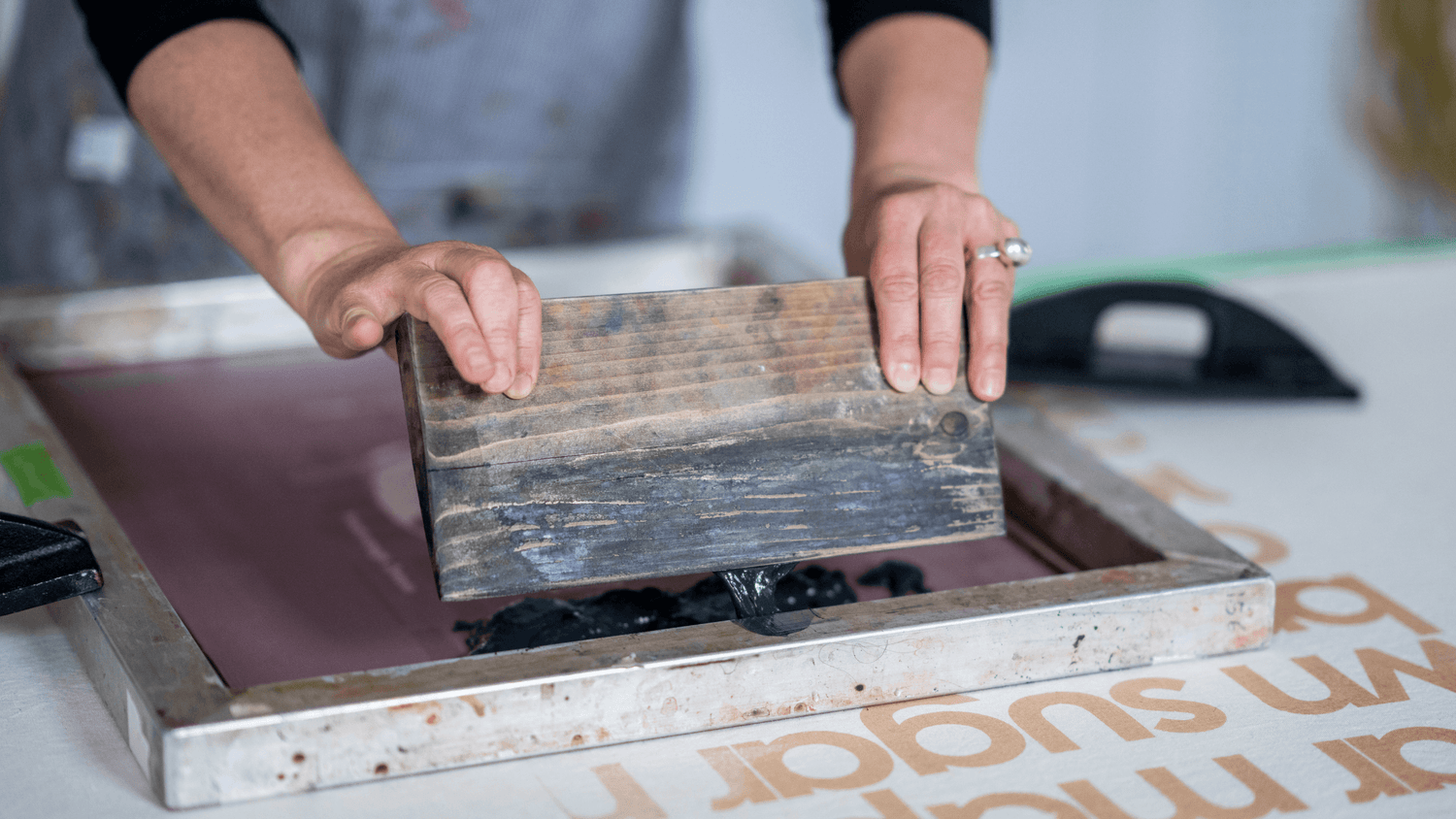You might have been wondering or asking the age old question… what is screen printing and how do we use it to personalise our products? We are going to give you a brief overview of what screen printing is and the history behind it.
First things first, what actually is screen printing and what does it mean?
Screen printing is the process of transferring a stencilled design onto a surface using a mesh screen, ink and a squeegee. Fabric and paper are traditionally used as screen-printed surfaces, but it’s also possible to print onto wood, metal, plastic and even glass with specialised inks.
The basic method of screen printing involves creating a stencil on a fine mesh screen, and then pushing ink through to create an imprint of your design on the surface beneath.
Here at Hoesh we use screen printing on all of our non-woven and PEVA (waterproof) covers, just recently we have introduced our latest product, luxury white wooden hangers. And, for the first time we are now able to screen print on them.

The process can also sometimes be called 'silk screening' or 'silk screen printing'. The actual printing process is always fairly similar but the way the stencil is created can vary, depending on the materials used.
The history of screen printing
Screen printing is an ancient art form created in China sometime between 960 – 1279 AD. This was a method of printing pattens onto fabrics. Stencils were cut out of paper and the mesh was woven from human hair. Stiff brushes were used to force ink through the mesh onto the fabric.
17th Century
In the 17th century silk screens were being used in France as a way of printing onto fabric. Stiff brushes were still being used as a way to push ink through the mesh. However, it was here that the practice of stretching silk over a frame to support stencils was created. Artists began to use silkscreens stretched over a frame to print their designs onto fabric. The process continued to gain popularity during the industrial revolution. Factories used screen printing to mass-produce wallpapers and fabrics during that time.
18th Century
In the 18th century European merchants brought the method and materials back with them after trading along the Silk Road. It was slow to catch on as a fabric printing method owing to the high cost of silk mesh at the time. Over time silk more affordable and screen printing began to gain some momentum, gradually becoming a very popular and profitable way to print fabric.
20th Century
In the early part of the 20th century squeegees were introduced as a way of pulling ink through the screen mesh. Also, at the same time printers developed photo-sensitised emulsions, allowing artists to create complex stencil designs much more easily.
In the 1930s, artists began experimenting with screen printing as an artistic medium, naming their new-found form 'serigraphy' to distinguish it from industrial printing. By the 1960s, artists such as Eduardo Paolozzi and Andy Warhol were using screen printing to create fine art. Dubbed 'pop-art', the artist used screen-printing to create multiple copies of a single image. Essentially questioning what constituted fine art. Warhol's famous Marilyn Diptych is perhaps the best-known example of screen printing as an artistic form.

(Image sourced from www.artuk.org)
Present day
Nowadays, screen printing is used both as an artistic form and as a commercial printing process. One stencil can be used to reproduce the same design hundreds or even thousands of times. It’s a brilliant technique for us as a wholesaler in producing large orders of personalised dress covers, suit covers, carrier bags, storage boxes and much more!




Leave a comment
All comments are moderated before being published.
This site is protected by hCaptcha and the hCaptcha Privacy Policy and Terms of Service apply.